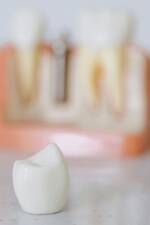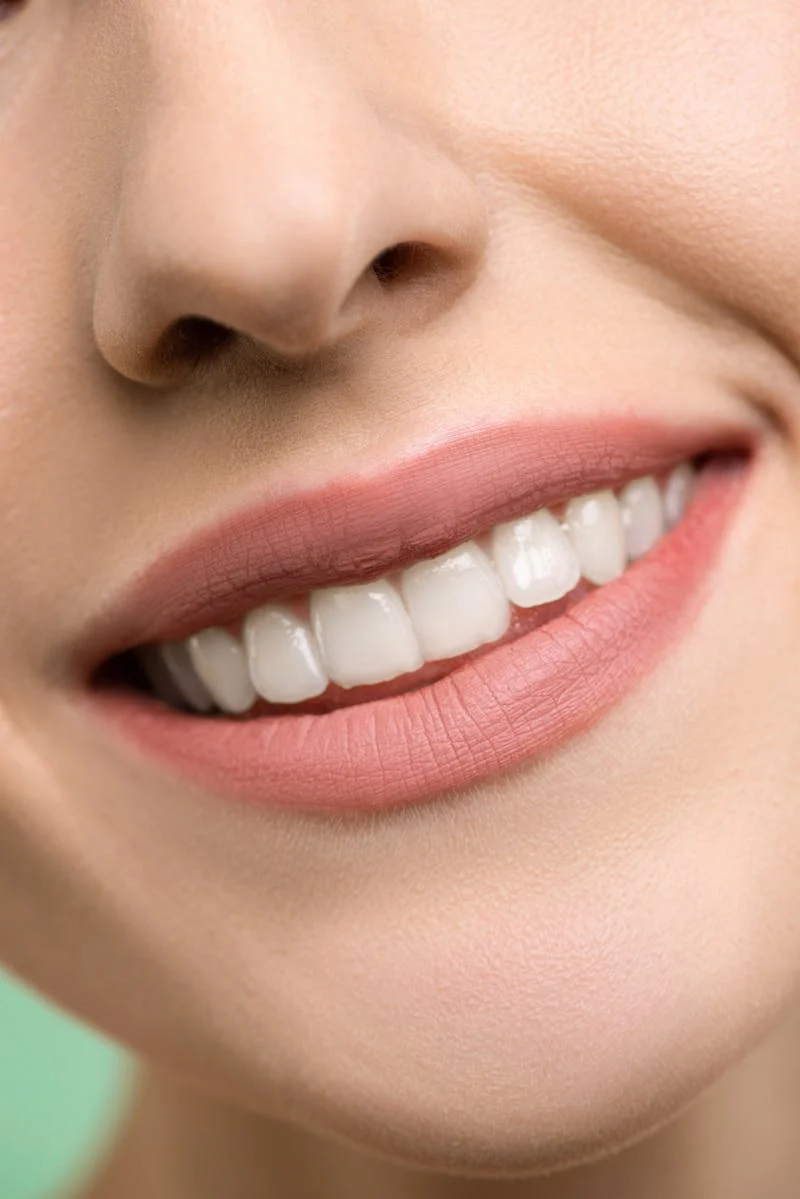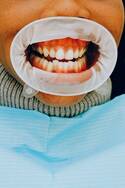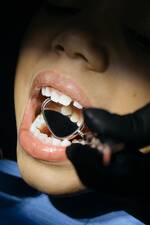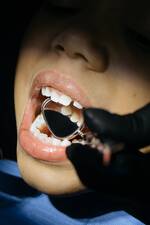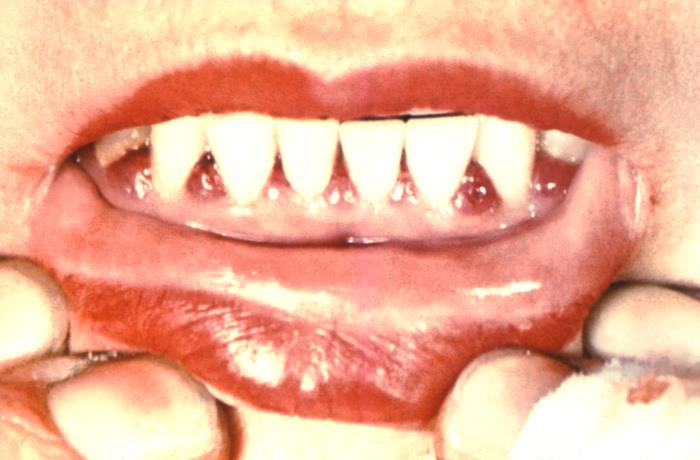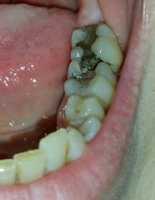Are you missing a tooth?
If you have lost a tooth, don't worry; you're not alone! Many people lose teeth due to accidents, tooth decay, or gum disease. But did you know that options are available to replace a missing tooth?
Do you know the options available to replace a missing tooth?
Yes, there are a few options to replace a missing tooth. One standard option is a dental implant. Another option is a dental bridge, where a false tooth is attached to the teeth on either side of the gap. There are also partial or complete dentures and removable replacements for missing teeth.
(more…)
Dental Research / 18.06.2024
The Benefits of Regular Dental Check-Ups: Ensuring Lifelong Oral Health
Key Takeaways
- Regular dental check-ups play a critical role in maintaining oral health and preventing dental issues.
- Professional cleanings remove plaque and tartar that are difficult to eliminate with at-home brushing and flossing.
- Early detection and treatment of dental problems can save on more extensive and expensive procedures in the future.
- Routine dental visits contribute to overall health by potentially identifying systemic issues like diabetes or heart disease.
There are various at-home whitening products available, such as strips, gels, and mouthwashes. However, it's important to use these products...
Dental Research, Opiods / 31.05.2024
The Hidden Dangers of Prescription Medications: How Suboxone Affects Dental Health
Key Takeaways
- Prescription medications, like Suboxone, may have unexpected side effects, including dental health issues.
- It's crucial for everyone, particularly those on prolonged medication, to prioritize proper oral care.
- Familiarizing yourself with medication side effects empowers you to take preemptive steps to safeguard your well-being.
- Consistent dental examinations and embracing a healthy lifestyle can help alleviate certain medication-related risks.
Dental Research, Lifestyle & Health / 25.05.2024
Everyone Can Have a Healthy Smile: Practical Tips for Optimal Oral Health
 Table of Contents
Table of Contents
- The Importance of Oral Health
- Routine Dental Checkups
- Proper Brushing and Flossing Techniques
- The Impact of Diet on Oral Health
- Lifestyle Choices Affecting Oral Health
- Benefits of Preventative Care
Author Interviews, Dental Research / 12.05.2024
Gum health is a key factor for general health throughout life
Brussels, 10 May 2024. Gum health may play a pivotal role in overall health and quality of being, and deserves to be better acknowledged and explored by the research community. That is why the EFP promotes Gum Health Day 2024 on 12 May, an outreach initiative celebrated in more than 30 countries around the world to raise awareness among the medical profession and the general public of the importance of periodontal health. Dr Mia Rakic, Gum Health Day 2024 co-ordinator and member of the executive committee of the EFP (European Federation of Periodontology, efp.org), explains why Gum Health Day 2024 focuses on Generation Z and why gum health is so relevant:
(more…)
Author Interviews, Brigham & Women's - Harvard, Dental Research, JAMA, Respiratory / 18.12.2023
Brushing Teeth in Hospitalized Patients May Reduce Risk of Pneumonia
MedicalResearch.com Interview with:
Michael Klompas MD, MPH, FIDSA, FSHEA
Hospital Epidemiologist
Brigham and Women’s Hospital
Professor of Medicine and Population Medicine
Harvard Medical School and
Harvard Pilgrim Health Care Institute
MedicalResearch.com: What is the background for this study? Can teeth be safely brush in patients who are comatose, intubated or have NG tubes?
Response: Pneumonia is thought to occur when secretions from the mouth get into the lungs. Since there are many microbes in the mouth, there’s a risk that secretions from the mouth that get into the lungs will lead to pneumonia. Toothbrushing may lower this risk by decreasing the quantity of microbes in the mouth.
It is indeed safe and appropriate to brush the teeth of someone who is comatose, intubated, or who has an NG tube. Indeed, our study found that the benefits of toothbrushing were clearest for patients receiving mechanical ventilation.
(more…)
So, you've probably heard about ultrasonic tooth cleaners, right? They're like the new kids on the block in the world of dental hygiene. These gadgets use high-frequency sound waves – we're talking ultrasonic vibrations – to gently yet effectively break down and remove all sorts of nasties from your teeth: plaque, tartar, the works. The cool part? They do this without being harsh on your gums or enamel. This is key because, let’s face it, no one wants to trade in tartar for tooth sensitivity. It’s about getting your pearly whites clean without the downsides of traditional scraping tools that sometimes feel like a DIY project gone wrong in your mouth.
Why Ultrasonic Cleaners Could Be Your Teeth's New Best Friends

Now, why are these ultrasonic wonders good news for your chompers? Well, think about the usual suspects that dentists always warn us about – plaque and tartar. They're not just cosmetic issues; they're like the bad guys plotting against your oral health. Ultrasonic tooth cleaners step in as the superheroes, targeting these troublemakers with precision. This means less plaque and tartar, which in turn means a lower risk of gum disease and cavities. It’s a domino effect, really. Plus, these cleaners often reach where regular brushes can't, like those sneaky spots between your teeth and along your gum line. So, you’re not just cleaning; you're doing a deep clean every time.
(more…)If you're setting your sights on giving your gums the royal treatment, you're on the right track. You want to buddy up with foods that are friends with your gums. Crunchy greens, like celery and spinach, are packed with gum-loving vitamins and minerals. Noshing on cheese and yogurt isn't just good for your bones; it also helps buffer the acids in your mouth, keeping your gums happy. Why's this a big deal? Well, your gums are the unsung heroes holding your teeth in place, and keeping them healthy is key to making sure your smile stays put for the long run.
Foods to Give a Wide Berth
Now, on to the munchies that your gums wish they could ghost. Sugary snacks and acidic eats like citrus and tomatoes might taste the bomb, but they're no pals to your gums. They invite bacteria to the party, and not the good kind. These guys get down to business, breaking down your gum tissue and causing inflammation. If you're fond of a smoke or a cheeky glass of wine, you might want to rethink that too. Anything that dries out your mouth is basically giving your gums a hard time. Skipping these is critical because, once gum disease checks in, it can be a hassle to show it the door.
Author Interviews, Dental Research, Pediatrics, USPSTF / 13.11.2023
USPSTF: Pediatric Oral Health Screening in Primary Care Evaluated
MedicalResearch.com Interview with:
Li Li, M.D., Ph.D., M.P.H.
The Walter M. Seward Professor and Chair of Family Medicine
University of Virginia (UVA) School of Medicine
Director of Population Health at UVA Health
Dr. Li joined the U.S. Preventive Services Task Force in January 2021.
MedicalResearch.com: What is the background for this study? What are the main findings?
Response: Oral health is an important part of everyone’s overall health and well-being. Recognizing this, the Task Force looked at whether primary care clinicians can play a role in complementing the work of dental professionals to prevent cavities and gum disease.
MedicalResearch.com: What are the main findings?
Response: Our review of the latest available evidence focused on the prevention of cavities for children who are 5 years old and older and do not have any signs or symptoms. After a thorough review, we found that there is not enough evidence to recommend for or against oral health screening and interventions for school-aged children in primary care settings.
(more…)
Dental Research / 27.07.2023
Fluoride-Free Toothpaste Is Just As Good As Fluoridated Toothpaste, New Study Reveals
This article is for informational purposes only and is not a substitute for professional medical advice, diagnosis or treatment. Contact a qualified dentist or medical professional before engaging in any physical activity, or making any changes to your dental program, diet, medication or lifestyle,
For years, medical research has found that fluoride in toothpaste helps to prevent tooth decay and protect against cavities. As a result, most toothpastes contain between 1,000 to 1,100 mg/L of sodium fluoride or monofluorophosphate. But a new study has found that fluoride-free toothpaste is just as effective at preventing cavities as fluoride-based toothpaste. So, does this mean the end of using toothpaste enhanced with fluoride?
The study’s key findings
 Poznan University of Medical Sciences carried out a study involving 171 participants over a period of 18 months. The participants were split into two groups. One group used hydroxyapatite (fluoride-free) toothpaste and the other group used fluoridated toothpaste throughout the study. Six-monthly trips to a dental clinician were completed and a DIAGNOcam device and plaque-disclosing solution were used to check for signs of cavities and plaque. The end results revealed that almost 90% of people in both groups had no new cavities, which indicates that both hydroxyapatite toothpaste and fluoridated toothpaste keep cavities at bay.
Poznan University of Medical Sciences carried out a study involving 171 participants over a period of 18 months. The participants were split into two groups. One group used hydroxyapatite (fluoride-free) toothpaste and the other group used fluoridated toothpaste throughout the study. Six-monthly trips to a dental clinician were completed and a DIAGNOcam device and plaque-disclosing solution were used to check for signs of cavities and plaque. The end results revealed that almost 90% of people in both groups had no new cavities, which indicates that both hydroxyapatite toothpaste and fluoridated toothpaste keep cavities at bay.
The British Dental Association stays on top of important trends that affect health. Baby food is the latest research subject in their crosshairs. With infant health a high concern, there is good reason to take a longer look at food consumption.
Oral Care Exams
Your first infant oral exam at NorthStar Dental Care will go into detail about the dos and don’ts of nutrition. Preventing oral health issues will eliminate some of the most debilitating problems when growing up. This is why the latest research from the BDA is so important, but the devil is still in the details. Before going down the rabbit hole of information, make sure that your baby is scheduled and up to date with all of their dental appointments. The first exam is one of many, with each one after being just as important as the last.
(more…)
Dentistry has never been more convenient or sought-after than ever before. Not only can dental professionals these days aid with oral health-related issues, but they can also assist with cosmetic dental concerns. Dental veneers are one of the things that can greatly help with a wide array of health or cosmetic dental issues.
If you fall into one of the falling categories, you might be a great candidate for dental veneers.
Those with Tooth Discoloration
 Tooth discoloration is such a common issue. It can be caused by improper brushing habits, smoking, or even drinking too many dark beverages like coffee or tea. So, people often opt for teeth whitening as a resolution.
Teeth whitening isn’t the only solution for tooth discoloration. Dental veneers, which are little shells that get placed over the teeth, can cover up yellowed teeth or teeth with brown spots quite effortlessly. This way, you won’t have to worry about regularly getting your teeth bleached or purchasing expensive teeth-whitening products.
Tooth discoloration is such a common issue. It can be caused by improper brushing habits, smoking, or even drinking too many dark beverages like coffee or tea. So, people often opt for teeth whitening as a resolution.
Teeth whitening isn’t the only solution for tooth discoloration. Dental veneers, which are little shells that get placed over the teeth, can cover up yellowed teeth or teeth with brown spots quite effortlessly. This way, you won’t have to worry about regularly getting your teeth bleached or purchasing expensive teeth-whitening products.
 Tooth discoloration is such a common issue. It can be caused by improper brushing habits, smoking, or even drinking too many dark beverages like coffee or tea. So, people often opt for teeth whitening as a resolution.
Teeth whitening isn’t the only solution for tooth discoloration. Dental veneers, which are little shells that get placed over the teeth, can cover up yellowed teeth or teeth with brown spots quite effortlessly. This way, you won’t have to worry about regularly getting your teeth bleached or purchasing expensive teeth-whitening products.
Tooth discoloration is such a common issue. It can be caused by improper brushing habits, smoking, or even drinking too many dark beverages like coffee or tea. So, people often opt for teeth whitening as a resolution.
Teeth whitening isn’t the only solution for tooth discoloration. Dental veneers, which are little shells that get placed over the teeth, can cover up yellowed teeth or teeth with brown spots quite effortlessly. This way, you won’t have to worry about regularly getting your teeth bleached or purchasing expensive teeth-whitening products.
Unlike whitening treatments that require regular upkeep, veneers offer a long-term approach to achieving a consistently bright smile. Many patients explore professional veneer options, such as those available through cosmetic dental experts like Lowenberg, Lituchy & Kantor, to ensure a natural and durable solution tailored to their specific needs.
:
This way, you won’t have to worry about regularly getting your teeth bleached or purchasing expensive teeth-whitening products.
(more…)
Author Interviews, Dental Research, NYU, Tobacco, Tobacco Research / 10.03.2022
E-Cigarettes Linked to Increased Risk of Periodontal Disease
MedicalResearch.com Interview with:
Scott Thomas, PhD
Assistant Research Scientist, Department of Molecular Pathobiology
and
Fangxi Xu, Junior Research Scientist & Clinical Research Coordinator
Department of Molecular Pathobiology
NYU College of Dentistry
MedicalResearch.com: What is the background for this study? What are the main findings?
 Response: Cigarette smoking is one of the well-established causes of periodontitis, but the effect of using electronic cigarettes (e-cig), especially its long-term impact on periodontal health, is not yet clearly understood. Considering the increased popularity of e-cig use, especially among teenagers and young adults, and the known effect of high nicotine concentration in e-cigarette products, we conducted this clinical research to see if there were differences in periodontal health between e-cig users, traditional smokers, and nonsmokers. The study consisted of two visits, 6 months apart, where measures of oral and periodontal health were obtained.
Our data showed significantly greater clinical attachment loss in the e-cigarette users and cigarette smokers than in the non-smokers at both study visits. In only e-cigarette users, we observed an over 0.2 mm average increase in the clinical attachment loss after 6 months. (more…)
Response: Cigarette smoking is one of the well-established causes of periodontitis, but the effect of using electronic cigarettes (e-cig), especially its long-term impact on periodontal health, is not yet clearly understood. Considering the increased popularity of e-cig use, especially among teenagers and young adults, and the known effect of high nicotine concentration in e-cigarette products, we conducted this clinical research to see if there were differences in periodontal health between e-cig users, traditional smokers, and nonsmokers. The study consisted of two visits, 6 months apart, where measures of oral and periodontal health were obtained.
Our data showed significantly greater clinical attachment loss in the e-cigarette users and cigarette smokers than in the non-smokers at both study visits. In only e-cigarette users, we observed an over 0.2 mm average increase in the clinical attachment loss after 6 months. (more…)
 Response: Cigarette smoking is one of the well-established causes of periodontitis, but the effect of using electronic cigarettes (e-cig), especially its long-term impact on periodontal health, is not yet clearly understood. Considering the increased popularity of e-cig use, especially among teenagers and young adults, and the known effect of high nicotine concentration in e-cigarette products, we conducted this clinical research to see if there were differences in periodontal health between e-cig users, traditional smokers, and nonsmokers. The study consisted of two visits, 6 months apart, where measures of oral and periodontal health were obtained.
Our data showed significantly greater clinical attachment loss in the e-cigarette users and cigarette smokers than in the non-smokers at both study visits. In only e-cigarette users, we observed an over 0.2 mm average increase in the clinical attachment loss after 6 months. (more…)
Response: Cigarette smoking is one of the well-established causes of periodontitis, but the effect of using electronic cigarettes (e-cig), especially its long-term impact on periodontal health, is not yet clearly understood. Considering the increased popularity of e-cig use, especially among teenagers and young adults, and the known effect of high nicotine concentration in e-cigarette products, we conducted this clinical research to see if there were differences in periodontal health between e-cig users, traditional smokers, and nonsmokers. The study consisted of two visits, 6 months apart, where measures of oral and periodontal health were obtained.
Our data showed significantly greater clinical attachment loss in the e-cigarette users and cigarette smokers than in the non-smokers at both study visits. In only e-cigarette users, we observed an over 0.2 mm average increase in the clinical attachment loss after 6 months. (more…)
AHA Journals, Blood Pressure - Hypertension, Dental Research, Menopause / 07.03.2022
Oral Bacteria May Be Linked to Hypertension Risk in Post-Menopausal Women
MedicalResearch.com Interview with:
Michael J. LaMonte, PhD, MPH
Research Professor (epidemiology)
Department of Epidemiology and Environmental Health
School of Public Health and Health Professions
Women’s Health Initiative Northeast Regional Center
University at Buffalo – SUNY
Buffalo, NY 14214
MedicalResearch.com: What is the background for this study? What are the main findings?
Dr. LaMonte: The rationale for this study was based on existing study results showing
- (1) oral bacteria are involved with conversion of dietary nitrate (e.g., from leafy greens and beets) to nitric oxide which is a chemical involved keeping arteries healthy and maintaining blood pressure;
- (2) rinsing the mouth with antiseptic solution (mouthwash) kills oral bacteria and results in rapid increases in systolic and diastolic blood pressure; and
- (3) a very limited amount of epidemiological data suggest that the oral bacteria found beneath the gums (responsible for gingivitis and periodontal disease) are associated with blood pressure and history of hypertension in middle-aged adults.
Aging, Author Interviews, Dental Research, Geriatrics, NYU / 23.01.2022
Socially Isolated Older Adults Have Accelerated Loss of Teeth
MedicalResearch.com Interview with:
Bei Wu, PhD
Dean's Professor in Global Health
Vice Dean for Research
Rory Meyers College of Nursing
Affiliated Professor, College of Dentistry
Co-Director, NYU Aging Incubator
New York University New York, NY 10010
MedicalResearch.com: What is the background for this study?
Response: Social isolation and loneliness are global public health concerns. Social isolation is the lack of social contacts and having few people to have regular interactions; while loneliness is the distressing feeling of being alone or separated. Approximately 24% of community-dwelling older adults aged 65 and above are considered to be socially isolated in the United States, and 43% adults aged over 60 years old report feeling lonely. Increasing evidence suggests that social isolation and loneliness are risk factors for older adults’ health outcomes, such as depression, comorbidities, cognitive impairment and dementia, and premature mortality. However, one key limitation in the literature is that only a few studies have examined the impact of social isolation and loneliness on oral health.
(more…)
Author Interviews, Dental Research, JAMA, Pediatrics, USPSTF / 10.12.2021
USPSTF: Importance of Preventing Dental Caries in Young Children
MedicalResearch.com Interview with:
Michael Cabana, M.D., M.A., M.P.H
Professor of Pediatrics
Albert Einstein College of Medicine.
Physician-in-chief , Children's Hospital at Montefiore
Chair of the Department of Pediatrics
Albert Einstein College of Medicine
Member, U.S. Preventive Services Task Force
MedicalResearch.com: What is the background for this study and recommendation statement?
Response: Dental caries, also known as cavities or tooth decay, is the most common chronic disease in children in the United States and can develop in any child whose teeth have come in. Many young children under five years old do not visit a dentist, so the Task Force reviewed the latest evidence on how primary care clinicians can help prevent tooth decay in young children.
The Task Force’s research led to two important findings: all young children whose teeth have come in should have fluoride varnish applied by their clinician, and all children six months and older whose water supply doesn’t contain enough fluoride should receive fluoride supplements. Both approaches can help prevent cavities in kids.
The Task Force also determined that there is not enough evidence to recommend for or against screening for tooth decay in the primary care setting for children under five. This is consistent with the Task Force’s 2014 recommendation on dental caries.
(more…)
Author Interviews, COVID -19 Coronavirus, Dental Research / 09.12.2021
COVID-19: Specialized Gum Could Trap Virus, Limiting Spread and Disease Severity
MedicalResearch.com Interview with:
Dr. Henry Daniell Ph.D
W. D. Miller Professor & Director of Translational Research,
Vice Chair, Department of Basic and Translational Sciences,
Editor in Chief, Plant Biotechnology Journal, Oxford, UK
School of Dental Medicine,
University of Pennsylvania,
Philadelphia PA 19104-6030
MedicalResearch.com: What is the background for this study?
Response: ACE2 is a human protein present in human cells, blood and saliva. In COVID-19 patients this protein is inactivated. SARS-CoV-2 virus enters human cells using receptor of this protein. ACE2 chewing gum utilizes two different mechanisms. ACE2 enzyme directly binds to the spike protein on SARS-CoV-2 and traps virus in the chewing gum. In addition, ACE2 enzyme binds to its own receptor on oral epithelial cells, thereby blocks entry of any virus that is not trapped in the chewing gum
(more…)
Author Interviews, Dental Research / 01.07.2021
Wisdom Teeth Removal Linked to Long Term Improvement in Taste
MedicalResearch.com Interview with:
Dane Kim, Dental Student
University of Pennsylvania School of Dental Medicine
MedicalResearch.com: What is the background for this study?
Response: This large study was inspired, in part, by a previous publication, Gustatory Function After Third Molar Extraction (Shafer et al. 1999), which examined the effect of third molar extractions on human taste function. Their work was based upon more severe extractions and followed patients only up to six months after their surgery. Studies examining taste function over a longer period, i.e., beyond six months from the surgery, were non-existent.
The Smell and Taste Center of Penn Medicine, which is the only center of its type in the United States, has a large unique database of patients who have been thoroughly tested for both smell and taste function. This provided us with the opportunity to compare data from hundreds of persons who had previously received third-molar extractions to those who had not received such extractions. Importantly, the extracts had occurred years before thee taste testing. (more…)
Author Interviews, Dental Research, Microbiome, University of Pennsylvania / 19.05.2021
Dental Caries: New Approach Breaks Down Harmful Biofilm
MedicalResearch.com Interview with:
Geelsu Hwang, Ph.D.
Assistant Professor
Department of Preventive and Restorative Sciences
Center for Innovation and Precision Dentistry (CiPD)
School of Dental Medicine
University of Pennsylvania
MedicalResearch.com: What is the background for this study? What is the significance of this oral biofilm?
Response: Dental caries is one of the most common and costly biofilm-dependent diseases that afflict children and adults worldwide. Particularly, Early Childhood Caries (ECC) is a hyper-virulent type of chronic tooth decay that most frequently afflicts underprivileged preschool children. The onset and progression of carious lesions in ECC are rapid and aggressive, causing rampant destruction of the smooth surfaces of teeth.
ECC is painful and often requires surgical procedure under general anesthesia, while current treatment modalities are inefficient and recurrence of ECC is common. Notably, interactions between a fungus, Candida albicans, and a bacterium, Streptococcus mutans, have been known to play important roles in the pathogenesis of dental caries.
Thus, we attempted to strategically develop a targeted measure to effectively prevent cross-kingdom interactions and subsequent biofilm development.
(more…)
Author Interviews, Dental Research, Mental Health Research, NYU / 15.04.2021
Periodontal Bacteria Linked to Alzheimer’s Amyloid
MedicalResearch.com Interview with:
ANGELA R. KAMER, DMD, MS, PhD
Associate Professor
Periodontology and Implant Dentistry
NYU Dentistry
MedicalResearch.com: What is the background for this study?
Response: The accumulation of amyloid β plaques and neurofibrillary pathology in the brain are pathognomonic to Alzheimer's disease (AD). Brain amyloid deposition begins decades before cognitive dysfunction and is thought to be the first AD pathological feature followed by tau tangle accumulations and other pathologies.
The mechanisms by which brain amyloid develops are incompletely understood although inflammation and bacterial imbalances (known as dysbiosis) of the gut and oral cavity may be involved. Periodontal disease affecting more than 50% of elderly is an inflammatory, chronic condition characterized by periodontal tissue destruction and bacterial imbalances. Using PET studies, we showed previously that measures of periodontal destruction were associated with brain amyloid retention in the brain [1]. In this study, we sought to investigate whether subgingival (under the gum line) bacteria associated with Alzheimer’s disease specific pathology, namely amyloidosis and tauopathy. (more…)
AHA Journals, Author Interviews, Blood Pressure - Hypertension, Dental Research / 30.03.2021
Periodontitis (Gum Disease) Linked to High Blood Pressure
MedicalResearch.com Interview with:
Francesco D’Aiuto
Professor/Hon Consultant
Head of Periodontology Unit
UCL Eastman Dental Institute
MedicalResearch.com: What is the background for this study?
Response: This study was set out to further our understanding of the link between gum disease and high blood pressure. Recent evidence suggested that individuals with gum disease had a 20-70% increased risk of hypertension and systemic inflammation seemed to be a driver in mediating this association. Further research on the matter was needed. We recruited two relatively large groups of otherwise healthy participants (without a confirmed diagnosis of hypertension) who had gum disease one and healthy gums the other.
We found that diagnosis of periodontitis (gum disease) was consistently linked to higher systolic blood pressure independent of other cardiovascular risk factors.
(more…)
Author Interviews, Dental Research, Inflammation / 22.10.2020
Periodontal Disease Has Systemic Effects Beyond Oral Disease
MedicalResearch.com Interview with:
Prof. Michael Glogauer, D.D.S., Ph.D
Faculty of Dentistry, University of Toronto
Toronto, ON Canada
MedicalResearch.com: What is the background for this study?
Response: Periodontal disease (PD) affects between 20% and 50% of the global population, with growing evidence supporting its association with other inflammatory diseases, including heart disease, arthritis, and diabetes.
Several studies have shown how untreated periodontal disease leads to increased medical care costs for nonoral conditions, including patient hospitalization rates. The interaction of inflammatory diseases with PD suggests a shared, underlying pathology that may be exploited to better manage patients and reduce the economic burden. However, the mechanisms through which these diseases interact are unclear.
In periodontal disease, tissue and bone destruction in the mouth is driven by elevated recruitment of white blood cells called polymorphonuclear neutrophils (PMNs), which are activated by the oral disease and recruited from the circulation to sites of inflammation. (more…)
Author Interviews, COVID -19 Coronavirus, Dental Research / 21.10.2020
Simple Mouthwashes May Inactivate Coronaviruses
MedicalResearch.com Interview with:
Craig Meyers, PhD
Department of Microbiology and Immunology
Pennsylvania State College of Medicine
Hershey, PA
MedicalResearch.com: What is the background for this study?
Response: As nasal and oral cavities are major points of entry and transmission for human coronaviruses our team of physicians and scientists (Craig Meyers, Janice Milici, Samina Alam, David Quillen, David Goldenberg and Rena Kass of Penn State College of Medicine and Richard Robison of Brigham Young University) were interested in testing common over-the-counter oral antiseptics and mouthwashes for their efficacy to inactivate infectious human coronavirus, which is structurally similar to SARS-CoV-2, the virus that causes COVID-19. While we wait for a vaccine for COVID-19 to be developed, methods to reduce transmission are needed. We chose products that are readily available and often already part of people’s daily routines.
(more…)
Author Interviews, Brigham & Women's - Harvard, Cancer Research, Dental Research, Esophageal, Gastrointestinal Disease / 24.07.2020
Gum Disease Linked to Cancer of Esophagus and Stomach
MedicalResearch.com Interview with:
Mingyang Song, MD, ScD.
Division of Gastroenterology
Clinical and Translational Epidemiology Unit, Massachusetts General Hospital and
Harvard Medical School
Department of Nutrition and Department of Epidemiology
Harvard T.H. Chan School of Public Health
Boston, Massachusetts
MedicalResearch.com: What is the background for this study?
Response: Recent studies showed a presence of dysbiotic oral microbiome in patients with esophageal and gastric cancer, suggesting a link between oral health and these cancers. However, how periodontal disease and tooth loss may influence the risk of these cancers has been inconsistent.
MedicalResearch.com: What are the main findings?
Response: Our findings support a possible role of oral health in the development of upper GI cancer. Individuals with periodontal disease and tooth loss are at higher risk of developing esophageal and gastric adenocarcinoma. The risk is particularly high for individuals with both periodontal disease and tooth loss.
(more…)
Author Interviews, CDC, Dental Research / 30.05.2020
Chronic Health Conditions Linked to Increased Tooth Loss
MedicalResearch.com Interview with:
Marcia L. Parker, DMD
Division of Oral Health
National Center for Chronic Disease Prevention and Health Promotion
CDC
MedicalResearch.com: What is the background for this study?
Response: This report reviewed three measures of tooth loss among adults over 50 years old with selected chronic conditions. The report analyzed data from the 2011–2016 cycles of the National Health and Nutrition Examination Survey (NHANES) to compare the rates of total tooth loss, severe tooth loss (less than 8 teeth), and lacking functional dentition (less than 20 teeth) among people with and without selected chronic conditions.
(more…)
Author Interviews, Dental Research, JAMA, Pain Research / 19.03.2020
Dental Work: Patient Satisfaction No Better With Opioids For Pain
MedicalResearch.com Interview with:
Dr. Romesh P. Nalliah BDS, MHCM
Associate Dean for Patient Services
Clinical Professor
Institute for Healthcare Policy & Innovation
Michigan Institute for Data Science
Director, Synergy Program
MedicalResearch.com: What is the background for this study?
Response: We designed and conducted this study because there is a paucity of knowledge related to opioid prescribing for acute dental pain. (more…)
Author Interviews, Dental Research, Environmental Risks, Pediatrics / 12.02.2020
PFAS Chemicals Found in Drinking Water Linked to Tooth Decay in Children
MedicalResearch.com Interview with:
R. Constance Wiener, DMD, PhD
Associate Professor
West Virginia University School of Dentistry
MedicalResearch.com: What is the background for this study?
Response: Perfluoroalkyl and polyfluoroalkyl substances (PFAS) are chemical groups that have had a wide variety of uses due to their ability to their ability to repel water and stains. They might be found in food packaging, water-repellant clothing and carpeting, paints, fire-fighting foam, and water, for example. Although many are no longer manufactured in the United States, PFAS persist in the environment as they do not readily break down. Adverse health effects have been speculated especially for low birthweight babies, immunological effects, certain cancers and thyroid hormone disruption.1 With these considerations, we hypothesized that there may be an association of PFAS with tooth development and subsequent dental caries (cavities). (more…)
Author Interviews, Dental Research, Opiods / 10.02.2020
Dentists Can Help Turn Around Opioid Epidemic
MedicalResearch.com Interview with:
Katie J. Suda, PharmD, MS
Study Principal Investigator
Professor of Medicine
University of Pittsburgh School of Medicine
MedicalResearch.com: What is the background for this study?
Response: Dentists are one of the top prescribers of opioids; prescribing 1 in 10 opioids in the United States. Dentists also prescribe a lot of opioids to adolescents and young adults which are a high risk population for substance misuse. This is especially true because studies have shown that non-opioid pain medications are similar or more effective for the treatment of oral pain.
(more…)
Author Interviews, Dental Research / 22.10.2019
Sentinels in the Mouth: Special Sensory Cells in the Gums Protect Against Periodontitis
MedicalResearch.com Interview with:
Robert Margolskee, MD, PhD
Director and President
Monell Center
Adjunct Professor, Department of Systems Pharmacology and Translational Therapeutics
University of Pennsylvania Perelman School of Medicine
MedicalResearch.com: What is the background for this study? What are the main findings?
Response: We found chemical-sensing cells in the gums that protect the mouth by standing guard against infections that damage soft tissue and destroy the bone that supports the teeth. With the help of bitter taste receptors that also detect byproducts from harmful bacteria, these special gum cells trigger the immune system to control the amount and type of bacteria in the mouth. This knowledge could one day lead to personalized dental treatments against gum disease.
Periodontitis is a serious gum disorder caused by an imbalance in the bacteria and other microorganisms of the mouth. We hope that our new information can help to combat this sixth-most prevalent infectious disease and most common cause of tooth loss worldwide.
(more…)

